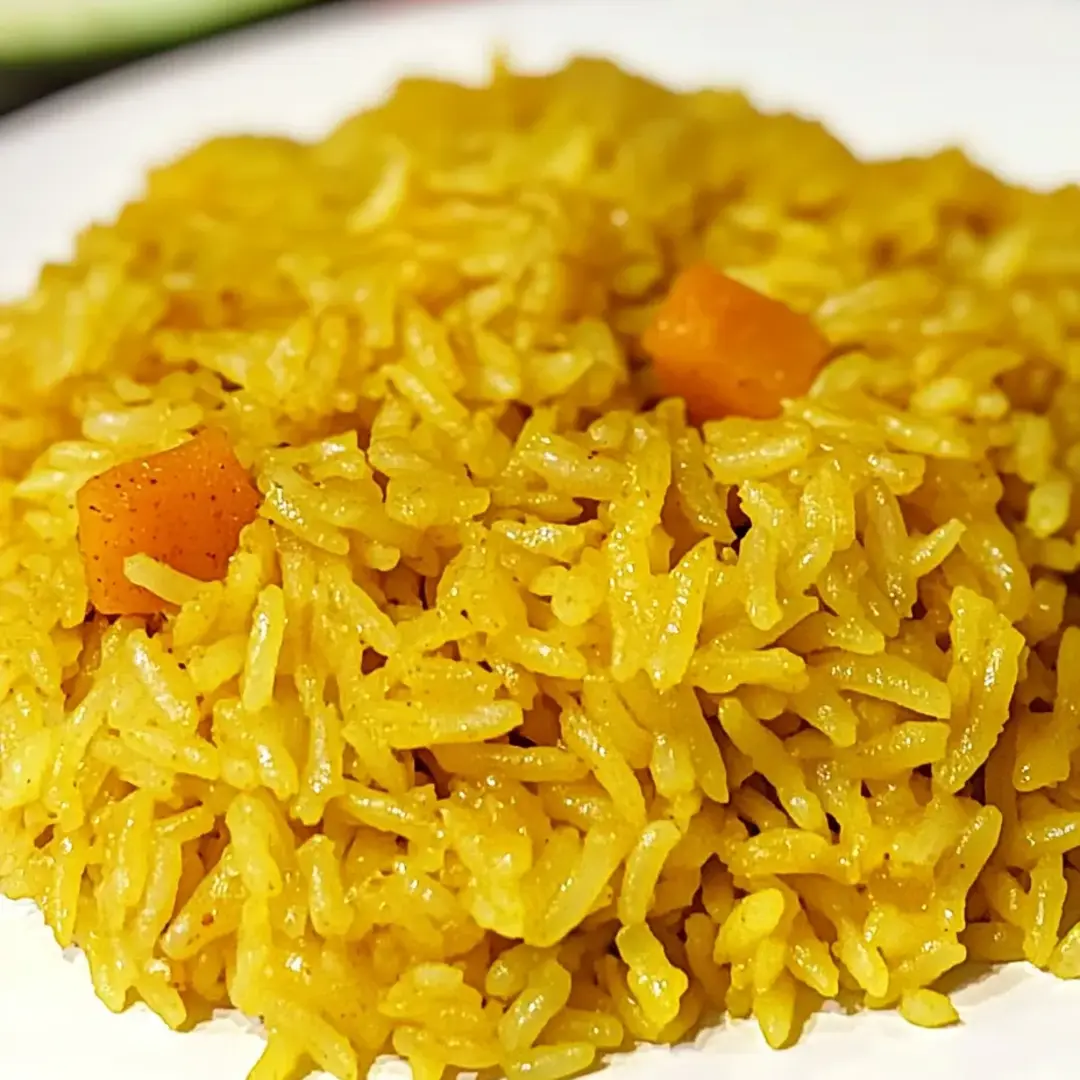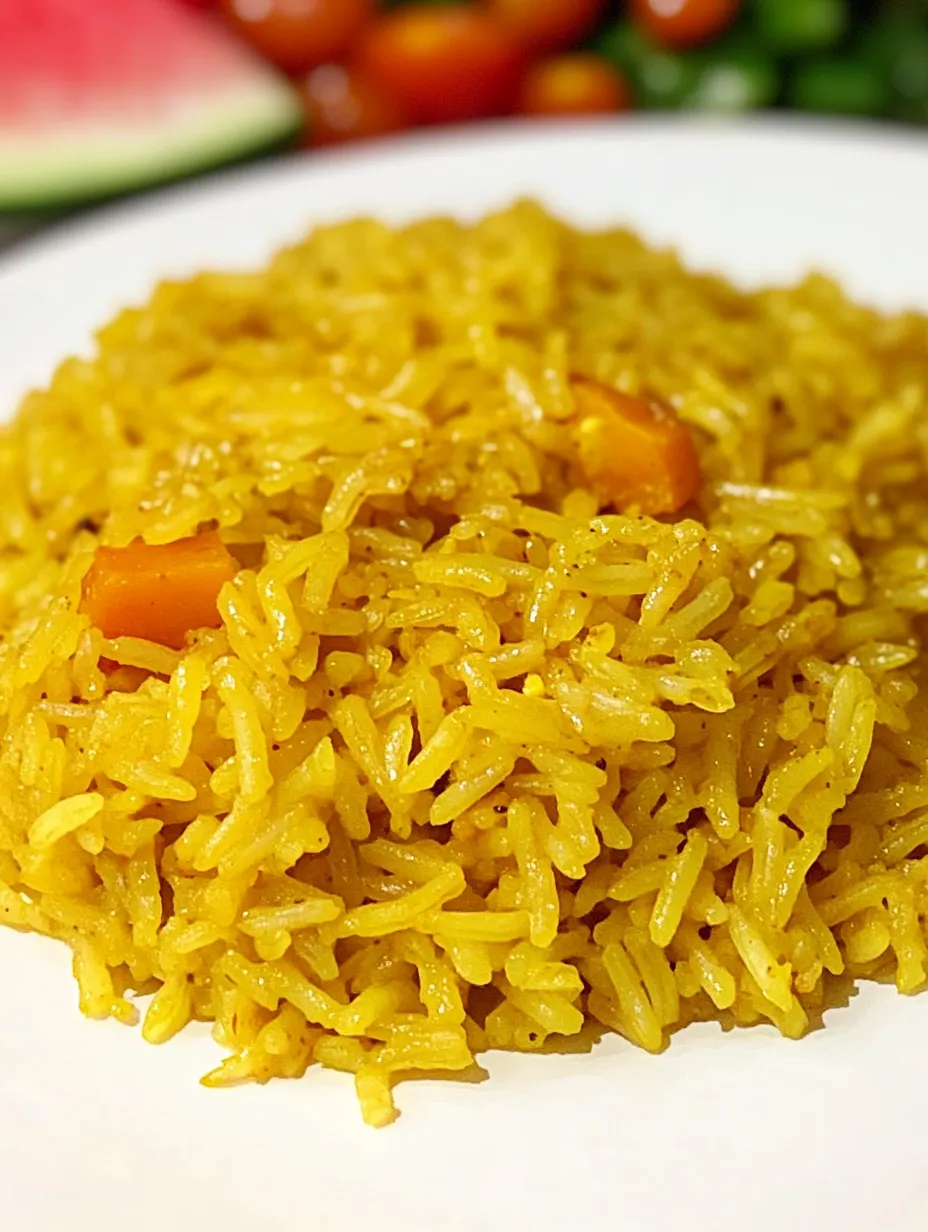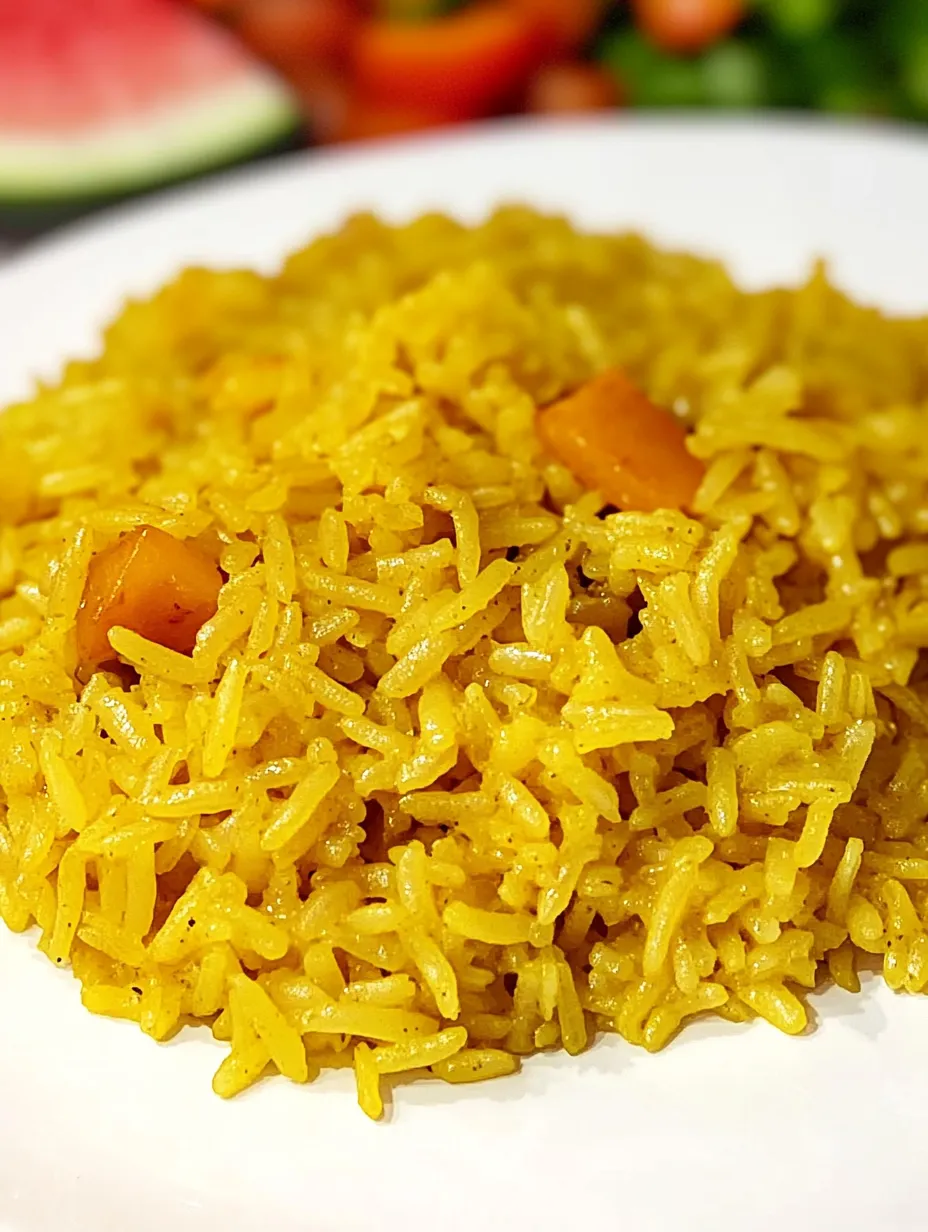 Pin it
Pin it
Curry-infused basmati rice transforms an ordinary side dish into an aromatic adventure that complements countless main courses. The fragrant long grains of basmati rice absorb the warm curry spices while colorful vegetables add texture, nutrition, and visual appeal. This versatile rice pairs beautifully with both Indian and Thai cuisines, bridging different culinary traditions with its adaptable flavor profile and satisfying presence on any plate.
I've served this rice at countless dinner parties and it's always disappeared quickly. The first time I made it for my family, my teenager who typically avoids anything with "visible vegetables" took seconds and asked me to pack it for lunch the next day!
Ingredients
- Basmati rice: Choose authentic, aged basmati for its distinctive nutty aroma and ability to cook into separate, fluffy grains. The longer the rice has been aged, the more pronounced its flavor will be. The slender, long grains provide an elegant texture that's worth seeking out.
- Sweet onion: Provides a foundation of flavor without the sharpness of regular onions. The natural sweetness balances beautifully with the curry spices. Vidalia or Walla Walla varieties work wonderfully if available.
- Mushrooms: Add an earthy, meaty dimension to the rice. Cremini mushrooms offer more flavor than white button varieties, but either works well. The mushrooms absorb the curry flavor while contributing their own unique umami element.
- Bell pepper: Brings color, crunch, and a hint of sweetness. Red bell peppers add beautiful vibrant color and are slightly sweeter than green ones, making them perfect for this dish. They also provide a significant vitamin boost.
- Olive oil: Used for sautéing the vegetables and toasting the rice. A good quality olive oil adds its own subtle flavor notes that complement the aromatic spices. No need for extra virgin here—regular olive oil has a higher smoke point for sautéing.
- Yellow curry powder: The star flavoring that transforms ordinary rice into something special. Yellow curry powder typically includes turmeric, coriander, cumin, fenugreek, and other warming spices that create depth without overwhelming heat.
- Kosher salt: Enhances all the other flavors. The coarser texture of kosher salt makes it easier to control the seasoning, and its clean taste doesn't interfere with the delicate spice notes in the dish.
- Water: The perfect amount creates fluffy rice without sogginess. Using the correct rice-to-water ratio (1:1.5) is crucial for perfectly cooked basmati rice that remains separate and fluffy.
 Pin it
Pin it
Step-by-Step Instructions
- Step 1:
- Prepare your vegetables with precision - Begin by finely chopping your sweet onion into uniform pieces about ¼-inch in size, ensuring they'll cook evenly and practically melt into the finished rice. Next, clean your mushrooms by gently wiping them with a damp paper towel rather than washing them, which can make them waterlogged. Chop the mushrooms into pieces slightly larger than the onion, about ⅓-inch, as they will shrink considerably during cooking. For the bell pepper, remove the seeds and white ribs completely before dicing into colorful ⅓-inch pieces that will retain some texture after cooking. Having all vegetables prepped before you begin cooking ensures the process flows smoothly without any ingredients getting overcooked.
- Step 2:
- Select the proper cooking vessel - Choose a heavy-bottomed saucepan or small pot that distributes heat evenly and has a tight-fitting lid. This is crucial for properly steaming the rice. The pot should be large enough to accommodate the expansion of the rice plus the vegetables, but not so large that the rice layer is too thin. A 2-3 quart saucepan is ideal for this recipe. If your pot lid doesn't seal well, place a clean kitchen towel between the pot and lid to create a better seal and absorb excess moisture.
- Step 3:
- Sauté vegetables to develop flavor foundation - Heat your olive oil over medium heat until it shimmers but doesn't smoke. Add the finely chopped onions first, cooking for about 2 minutes until they begin to turn translucent. Their natural sugars will start to release, creating a beautiful flavor base. Next, add the mushrooms and diced bell pepper, continuing to sauté for another 3-4 minutes. The mushrooms will release their moisture and begin to brown slightly, concentrating their flavor, while the peppers will soften just enough while maintaining some texture. This layered approach to adding vegetables ensures each reaches its optimal doneness.
- Step 4:
- Toast the rice for nutty depth - Add the cup of basmati rice directly to the sautéed vegetables and stir continuously for about 2 minutes. This crucial toasting step coats each grain with oil and begins to develop a subtle nutty flavor that forms the backbone of the dish. You'll notice the rice becoming slightly translucent around the edges while remaining opaque in the center – this visual cue tells you the toasting is progressing perfectly. Make sure to keep the rice moving in the pan to prevent any grains from burning.
- Step 5:
- Incorporate the seasoning elements - Sprinkle the tablespoon of yellow curry powder and half teaspoon of kosher salt evenly over the rice and vegetable mixture. Continue to stir for another 30 seconds, allowing the heat to bloom the spices and release their aromatic oils. You'll immediately notice the fragrance intensifying – this is the curry powder's essential oils being activated by the heat, a process that significantly enhances the final flavor profile of the dish. The kitchen should fill with a warm, inviting aroma at this stage.
- Step 6:
- Add liquid and bring to perfect boil - Pour in the water and increase the heat to high, stirring once to ensure no rice is sticking to the bottom of the pan. Allow the mixture to come to a full, vigorous boil – not just a simmer. This initial strong boil is essential for proper rice cooking, as it creates the steam pressure needed for even cooking. Watch carefully, as this should take only about 2-3 minutes depending on your stove's power.
- Step 7:
- Reduce heat for proper steaming - Once the water reaches a full boil, immediately cover the pot with the tight-fitting lid and reduce the heat to the lowest possible setting. This dramatic temperature change creates the perfect environment for the rice to absorb the water slowly and evenly. Resist the urge to lift the lid during cooking – each peek releases essential steam and can result in unevenly cooked rice. Set a timer for exactly 20 minutes and allow the covered pot to work its magic undisturbed.
- Step 8:
- Rest and fluff for perfect texture - After 20 minutes, remove the pot from the heat source completely but keep the lid on, allowing the rice to continue steaming in its residual heat for an additional 5 minutes. This resting period allows any remaining moisture to distribute evenly throughout the rice. Finally, remove the lid and use a fork (not a spoon) to gently fluff the rice by lifting and separating the grains rather than stirring, which can break the delicate basmati and create a mushy texture.
The Perfect Pairing Partner
This aromatic rice isn't just a side dish—it's a culinary bridge builder. Its curry notes provide enough character to stand up to boldly flavored main dishes while remaining subtle enough not to compete with them. This unique versatility explains why it works equally well with the peanut-forward flavors of Thai Pork Satay and the rich, complex spices of Indian Chicken Tikka Masala. The rice absorbs sauce beautifully, transforming into something even more delicious as it mingles with the main dish on your plate.
The Magic of Basmati Rice
Basmati isn't just any rice—it's the aristocrat of the rice world. This long-grain variety has been cultivated for centuries in the foothills of the Himalayas, where the unique growing conditions create a grain with an unmistakable aroma (basmati literally means "fragrant" in Hindi). When cooked properly, each grain remains separate and elongates rather than plumping outward like other rice varieties. This distinctive characteristic creates the light, fluffy texture that makes basmati perfect for absorbing the flavors of this dish without becoming heavy or gummy.
Curry Powder: A Spice Blend with History
Yellow curry powder might seem like a simple ingredient, but it represents centuries of spice trade history. While authentic Indian cooking typically uses individual spices toasted and ground for each dish, curry powder was developed during the British colonial era as a convenient way to approximate Indian flavors. Today's yellow curry powders typically include turmeric (which provides the golden color), coriander, cumin, fenugreek, and varying amounts of other spices like cardamom, cinnamon, and clove. Different brands offer slightly different flavor profiles, so finding your favorite can become a delicious culinary adventure.
 Pin it
Pin it
Vegetable Variations for Every Season
One of the beauties of this recipe is its adaptability to seasonal produce. In spring, consider adding fresh peas in the last five minutes of cooking. Summer might bring diced zucchini or fresh corn kernels into the mix. Fall calls for diced butternut squash (pre-cook it slightly before adding), while winter welcomes sturdy greens like kale added just before covering the pot. The core technique remains the same, while the vegetables keep the dish fresh and exciting throughout the year.
The Secret to Fluffy Rice Every Time
Rice has a reputation for being temperamental, but a few simple principles guarantee success. First, the right water ratio is crucial—basmati needs less water than other varieties. Second, the initial high heat followed by very low heat creates the perfect cooking environment. Finally, resist the temptation to peek under the lid during cooking, which releases essential steam. Follow these principles, and perfect rice will become second nature rather than a culinary gamble.
I've tried dozens of curry powders over the years, and my absolute favorite comes from a small spice shop in my city's farmers market. The owner grinds it fresh weekly, and the aroma is intoxicating—floral, earthy, and complex. Finding your perfect curry powder makes this simple dish truly special.
This curry-infused basmati rice has become my signature side dish whenever I entertain. There's something deeply satisfying about creating such complex flavors from simple ingredients. I love how the kitchen fills with an exotic fragrance as the rice steams—it's like a preview of the meal to come. The contrast between the fluffy rice, tender mushrooms, and colorful bell peppers creates not just a feast for the palate but also for the eyes. Whether paired with something as simple as grilled chicken or as complex as a rich coconut curry, this rice holds its own without overwhelming. It's comfort food with an adventurous spirit—exactly the kind of cooking that makes me happiest.
Frequently Asked Questions
- → Can I use a different type of rice?
- Yes, you can substitute jasmine rice or long-grain rice, though basmati gives the most authentic flavor and texture for this dish.
- → How do I store leftover curried rice?
- Store in an airtight container in the refrigerator for up to 3 days. Reheat with a splash of water to restore moisture.
- → Can I make this recipe without mushrooms?
- Absolutely! You can omit mushrooms or substitute with diced carrots, peas, or corn for a different flavor profile.
- → What main dishes pair well with this rice?
- This rice pairs beautifully with grilled chicken, tandoori dishes, Thai curries, or as a base for a vegetarian bowl.
- → Can I make this spicier?
- Yes, add a pinch of cayenne pepper or red pepper flakes when adding the curry powder for some heat.
